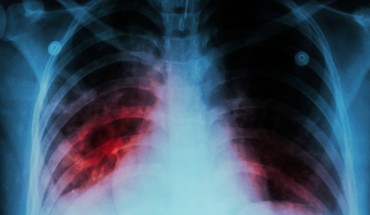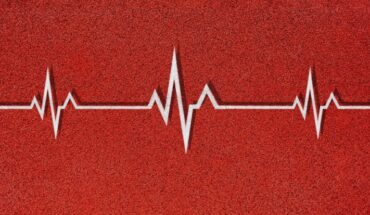Ozone, a super-charged form of oxygen which exists naturally as a gas in the stratosphere and shields us from the sun’s harmful ultraviolet radiation, has been used in medical therapies for over 100 years.
My father, who had a tonsillectomy as a boy, recalls sitting in ozone chambers, for half an hour at a time, at the NHS hospital where he was treated. The ozone was supposed to speed up the healing process and prevent infection. Whether it had any effect, ozone is no longer used this way since ozone is a toxic gas which can harm the lungs if inhaled.
Ozone therapy is still widely used to treat musculoskeletal complaints however and could be an effective way of treating a common form of chronic foot pain known as plantar fasciitis, according to a new study which is currently ongoing in Turkey.
Plantar fasciitis, is the inflammation of connective tissue in the sole of the foot, can be caused by a number of factors, including type of shoes, foot structure, overuse and types of walking surfaces.
According to the National Institute for Care and Clinical Excellence, (NICE), the condition affects around 4 per cent of people in the general population and is most common in people between the ages of 40 and 60.
Although symptoms usually improve on weeks, in some people, it can last for months and years. A team at Ankara City Hospital in Bilkent in Turkey recruited 48 people between the ages of 18 and 65 with heel pain lasting longer than three months to see if ozone therapy is more effective than Extracorporeal Shock Wave Therapy (ESWT), a non-surgical treatment which works by delivering impulses of energy, targeted to specific damaged tissues. One half of the group received ESWT and the other half received ozone injections.
This study, which will report results next year, is one of the first double blind placebo controlled trials to look at the effectiveness of ozone therapy and follows on from work done by another team in Iran which as already published results showing that local ozone injection is more effective and longer lasting than a conventional treatment used widely in the NHS, corticosteroid injections which typically work for only one to two months by dampening down local inflammation. Arash Babaei-Ghazani, MD, an assistant professor of physical medicine and rehabilitation at Iran University of Medical Sciences, in Tehran, who reported at the 2018 annual meeting of the American Academy of
Pain Medicine said. “Recently, ozone injections have been introduced for degenerative and inflammatory musculoskeletal disease, and there are no reported allergic side effects or destructive adverse effects on tendons or cartilage.
Although both morning and daily pain reduction and daily activity improvement were better in the corticosteroid group at two weeks after injection, the ozone effects were significantly greater at 12 weeks. The study found no serious adverse events in patients who received ozone injections, although the researchers acknowledged that further studies with larger sample sizes and longer follow-up times are warranted to further evaluate these possibilities, particularly in light of the
trial’s small sample size.
Helen Swindley, a podiatrist based in Conwy in Wales who specialises in foot biomechanics, says that ozone therapy is not currently used in the UK and needs further investigation to ensure its safety and effectiveness. She also points out that it may relieve pain, but the underlying causes of plantar fasciitis need to be addressed for a permanent solution. ‘Its very important to have a proper assessment and every individual is different. It may be that high arches or low arches are the root cause, or your activity levels have suddenly gone up putting extra strain on the connective tissues in your feet. But if you don’t treat the underlying cause, the problem will keep recurring.”
Ozone therapy is already successfully in spinal procedures to ease chronic back pain. MrMohammed Akmal, Consultant Orthopaedic Spine Surgeon, Medical Director of the Harley Street Hospital, has performed spinal ozone therapy on thousands of patients over the last five years to ease aa range of conditions including prolapsed discs, scoliosis and back pain due to compression in the spine. “I inject a very small amount of ozone gas into the nucleus of the disc using X-ray to guide me, and because ozone is a very soluble gas, it rapidly breaks down on contact with the tissue. It is the most powerful oxidising agent and causes immediate oxidation in the area. This causes the body to release a range of different chemicals including powerful healing antioxidants. It also blocks the inflammation cascade by preventing the formation of prostaglandins which cause inflammation.
Finally, It is also a form of supercharged oxygen so when injected into an area with poor blood flow, it can help to increase oxygen supply to the tissues which aids healing.
According to a meta analysis published in the Journal of Vascular and Interventional Radiology in 2010, which looked at 12 studies, ozone treatment for herniated discs ‘is an effective and extremely safe procedure. The estimated improvement in pain and function is impressive in view of the broad inclusion criteria, which included patients ranging in age from 13 to 94 years with all types of disc herniations. Pain and function outcomes are similar to the outcomes for lumbar discs treated with surgical discectomy, but the complication rate is much lower and the recovery time is significantly shorter.”
“There is a lack of gold standard randomised controlled trials but anecdotally, all the patients I have treated have been more or less pain free after surgery and safely discharged on the same day as their operation.”
He warns that ozone therapy does not need to be carried out with care by trained professionals. “There are dangers associated with ozone therapy and it has to be carried out by trained medical experts.
He uses a machine which can determine dosages by increment of one mg per millilitre by volume and performs the procedure in an operating theatre with the patient sedated. ‘I inject into the spine so it has to be done very carefully with the aid of an X-ray in real time,’ he says. “The patient is also sedated because it can be quite painful . While injecting small amounts of ozone gas into muscle and the spine is safe with very few side effects, I would definitely not advise that people inject ozone gas into the blood stream which could lead to a fatal embolism.
Dr Richard Pollock is a holistic private dentist based in Chelsea and Harley Street. Over the last 10 years, he has treated thousands of people with ozone therapy, which is only available privately, he says to reduce the risk of infection and aid healing when performing root canal work. ‘Ozone is very effective at killing off viruses, bacteria, yeast and microscopic pathogens that cause gum disease, tooth decay and breakdown of bone. It works by denaturing the cell walls and killing them. I have no doubt that it works very well and is a better alternative than other available sterilisers.”
He uses special tools, which create ozone from the oxygen in the air using an electric current, to deliver concentrated ozone gas directly to the site in the mouth. This delivery system is key to making sure that the treatment is harmless to the patient. ‘It is all about dosage and how it is applied. Ozone is toxic at high levels and studies have shown that breathing in ozone gas in chambers can cause injury to the lungs.
We deliver it through a fine tube to the site where it is absorbed into the tissue and quickly breaks down into harmless oxygen again because the molecule is very unstable. ‘He says that his patients have had excellent results with no side effects.
Professor John Oxford, an emeritus professor of virology at Queen Mary University of London, says it is high time for a review of ozone therapy, which may be able to a cheap and effective way to combat a range of health problems.
‘There are lots of historic treatments and therapies which have disappeared from public view for a range of reasons. I would put ozone therapy high up on my list of things to investigate properly. With antibiotic resistance looming and more concerns about new pandemic viruses, it would be nice to have more resources at our disposal and ozone could be one of them.”
Ozone, which is a highly reactive molecule, does have antibacterial and antiviral properties first time I heard of it was when it was being used to stave off microbes and viruses in the Paris metro.
“At QMUL, we tried to experiment with ozone to see if it could combat SARS virus, but it was very difficult to do it safely and the results were too small to be extrapolated out in general terms. But there is plenty of scope to do more work to investigate this possible application for ozone therapy.”
- Biden Declines Second Term: Health Concerns - 23rd July 2024
- New catheter coating stops bacteria cells from swarming - 10th June 2024
- AI-designed catheters could dramatically reduce urinary tract infections - 10th June 2024







